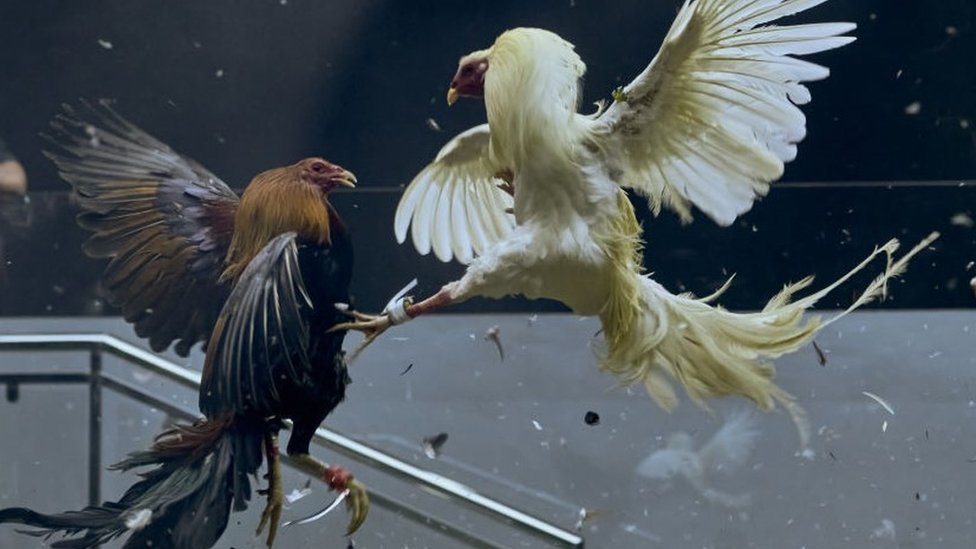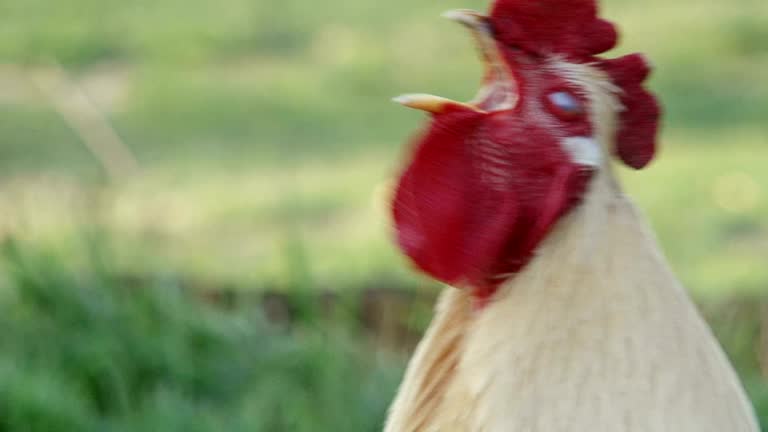Understanding C4 Cockfighting Video The Controversy and Culture Behind the Fight
Cockfighting has been a part of many cultures for centuries, often seen as a sport that embodies tradition and community. Among various forms of this activity, C4 cockfighting videos have gained traction online, showcasing intense battles between roosters bred and trained specifically for fighting. However, these videos also raise concerns and ethical considerations regarding animal welfare. This article delves into the facets of C4 cockfighting – Đá gà cpc4 videos, exploring their cultural significance, the breeding and training of fighting cocks, the legal landscape surrounding them, and the moral debates they incite.
 Read more – Video Đá gà C4
Read more – Video Đá gà C4
The Cultural Significance of C4 Cockfighting

Cockfighting is more than just a spectator sport; it holds historical and cultural weight in numerous societies.
Historical Roots of Cockfighting
The origins of cockfighting can be traced back to ancient civilizations. Various records suggest that this sport was practiced in places like Greece, Rome, and Asia thousands of years ago. In many cultures, the rooster symbolizes bravery and valor, making the fights a metaphor for human struggles and triumphs.
Social Dynamics and Community Involvement
In regions where cockfighting is prevalent, such as parts of South America, Southeast Asia, and the Caribbean, these events often serve as social gatherings. Families and friends come together to watch the fights, placing bets and sharing in the excitement. This sense of community fosters strong bonds among spectators, highlighting that cockfighting is about more than the fight itself.
Symbolism in Cockfighting
Roosters are often viewed as symbols of strength, masculinity, and resilience. The act of training a rooster for battle can be seen as a rite of passage for many young men in these communities. The birds themselves become emblematic of the hard work and dedication that goes into preparing for a fight.
C4 Cockfighting and Its Unique Appeal
C4 cockfighting videos have carved out a niche within the broader cockfighting culture. These videos typically feature high-stakes matches with well-trained birds, leveraging modern technology to capture every thrilling moment. The term “C4” refers to a specific style or method of cockfighting that may vary by region but generally involves specialized techniques and equipment. The unique visual appeal of these videos draws viewers from around the globe, creating a robust online following.
Breeding and Training of Fighting Cocks

The preparation process for cockfighting is intricate, involving careful breeding and rigorous training regimens.
Choosing the Right Breed
Not all chickens are suited for fighting; specific breeds are preferred for their tenacity, aggression, and physical attributes. Breeders often look for traits such as stamina, strength, and agility to ensure that their birds perform well in the arena. Popular breeds for fighting include the American Gamecock and the Asil, each renowned for their distinctive characteristics.
The Breeding Process
Breeding fighting cocks is meticulous and strategic. Experienced breeders study bloodlines to find the best combinations of genetics. This means selecting birds with proven performance records, which often requires keeping detailed lineage records over several generations. Health is also paramount; breeders ensure that their birds are free from diseases that could impact performance.
Training Regimens
Once the birds are selected, they undergo intensive training to prepare for combat. Training usually begins at a young age and includes physical conditioning, which may involve exercise routines designed to build strength and endurance. Some trainers use sparring sessions with other roosters to acclimate the birds to real combat scenarios.
Nutrition and Care
A proper diet is crucial for maintaining peak condition. Owners often invest in specialized feed that promotes muscle growth and overall health. Additionally, regular veterinary checkups are essential to monitor the birds’ health and well-being throughout the training process.
Legal Landscape Surrounding Cockfighting

Cockfighting laws vary widely across different countries and regions, reflecting diverse perspectives on animal rights and sporting traditions.
Global Perspectives on Cockfighting
In some countries, cockfighting remains a celebrated tradition, deeply rooted in cultural practices. For example, in the Philippines, live cockfighting events attract large audiences, and betting is commonplace. Conversely, nations such as the United States have outlawed cockfighting in most states due to animal welfare concerns.
Legal Consequences of Cockfighting
Despite its cultural significance in certain areas, many jurisdictions have enacted strict penalties against cockfighting. Offenses can range from fines to criminal charges, depending on local laws. This legal framework reflects a growing global movement towards animal rights, prompting changes in traditional practices.
The Role of Technology in Prosecution
With the rise of online platforms, law enforcement has found new methods to crack down on illegal cockfighting operations. C4 cockfighting videos, in particular, present challenges, as they can be shared widely without regulation. Authorities have increasingly focused on monitoring digital content to identify and prosecute participants in illegal fights.
The Debate Over Legalization
Some advocates argue for the legalization and regulation of cockfighting, citing potential economic benefits, such as tourism and job creation in related sectors. They suggest that regulating the practice could lead to better treatment and care for the birds involved, potentially improving welfare standards. This ongoing debate highlights the complexities of balancing tradition with modern ethical considerations.
Ethical Considerations and Debates
The ethical implications of cockfighting are hotly debated, particularly in light of increased awareness regarding animal welfare.
Animal Welfare Concerns
Critics argue that cockfighting subjects animals to unnecessary harm and suffering. The very nature of the sport—where birds are pitted against one another—raises questions about consent and the ethical treatment of animals. Opponents emphasize that raising animals for the sole purpose of fighting contradicts principles of compassion and respect for life.
The Argument for Tradition
Proponents of cockfighting often cite cultural heritage as a reason to preserve the practice. They argue that it is an integral part of their identity and that many people depend on it for their livelihoods. Supporters claim that responsible owners take excellent care of their birds, often treating them like family pets outside of fighting contexts.
The Middle Ground: Reform and Regulation
As discussions continue, some advocate for reform rather than outright bans on cockfighting. This approach seeks to strike a balance between preserving traditional practices and ensuring ethical treatment for the animals involved. Possible reforms could include mandatory veterinary checks, improved living conditions for fighting birds, and stricter regulations on how fights are conducted.
Public Perception and Media Influence
Media coverage of cockfighting can shape public perception, often portraying it as barbaric and outdated. This portrayal influences legislative moves to ban the practice outright. However, supporters argue that media representation often fails to acknowledge the nuances of cockfighting culture, leading to a lack of understanding about its significance to certain communities.
FAQs
What is C4 Cockfighting?
C4 cockfighting refers to a specific style of cockfighting that emphasizes particular techniques and approaches in the training and battling of roosters. It has grown in popularity due to its high-stakes matches and visually engaging presentations.
Is cockfighting legal everywhere?
No, the legality of cockfighting varies significantly across different countries and regions. While it is legal and culturally significant in some areas, many countries have banned the practice altogether due to animal welfare concerns.
How are fighting cocks trained?
Fighting cocks undergo rigorous training that includes physical conditioning, sparring with other roosters, and specialized diets to enhance their strength and endurance. Training often begins at a young age.
What are the arguments for and against cockfighting?
Arguments for cockfighting often center around cultural tradition and community bonding, while opponents highlight animal cruelty and welfare issues. There is ongoing debate about finding a middle ground through regulation and reform.
Are there any economic benefits to cockfighting?
Supporters sometimes argue that regulated cockfighting can boost local economies through tourism and job creation in associated industries. However, these claims are met with skepticism given the ethical concerns surrounding the practice.
Conclusion
C4 cockfighting videos encapsulate a complex interplay of tradition, community, and ethical dilemmas. While they celebrate a longstanding cultural practice, they also provoke necessary discussions about the welfare of the animals involved and the legal frameworks governing such activities. As society continues to grapple with these issues, the future of cockfighting will undoubtedly evolve, reflecting changing values and perspectives on animal rights and cultural heritage. The conversation around C4 cockfighting serves as a microcosm for broader societal debates about tradition, ethics, and our responsibility toward the creatures we share our world with.

